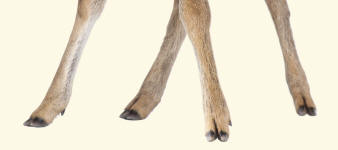Glossary
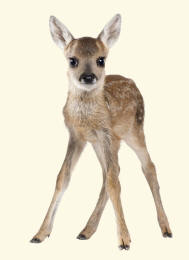
Digit
The distal parts of a limb, such as fingers or toes.
These are named and identified by Roman numerals.
In a pentadactyl (five-fingered or five-toed) arrangement, the most medial digit, if present, is I (e.g. the human thumb) and the most lateral is V (e.g. the human little finger).
These are named and identified by Roman numerals.
In a pentadactyl (five-fingered or five-toed) arrangement, the most medial digit, if present, is I (e.g. the human thumb) and the most lateral is V (e.g. the human little finger).
Toe
A digit of a foot.
Toes are named and identified by Roman numerals.
In a pentadactyl (five-fingered or five-toed) arrangement, the most medial digit, if present, is I (e.g. the human thumb) and the most lateral is V (e.g. the human little finger).
Toes are named and identified by Roman numerals.
In a pentadactyl (five-fingered or five-toed) arrangement, the most medial digit, if present, is I (e.g. the human thumb) and the most lateral is V (e.g. the human little finger).
Perissodactyl
Having an odd number of toes.
The order Perissodactyla includes mammals that stand on an odd number of digits, usually one toe or hoof.
For example, horses stand on one digit, rhinoceroses on three.
The order Perissodactyla includes mammals that stand on an odd number of digits, usually one toe or hoof.
For example, horses stand on one digit, rhinoceroses on three.
Tetradactyl
Having four digits (fingers, toes) on a limb.
Many amphibians and birds are tetradactyl.
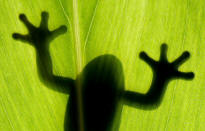
Many amphibians and birds are tetradactyl.

Tridactyl
Having three digits (fingers, toes) on a limb.
e.g. rhinoceros, hipparion (ancestor of the modern horse), and emu.
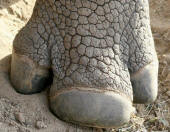
e.g. rhinoceros, hipparion (ancestor of the modern horse), and emu.

Didactyl
Having two digits (fingers, toes) on a limb.
e.g. two-toed sloth, cattle, sheep and deer.
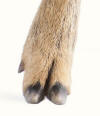
e.g. two-toed sloth, cattle, sheep and deer.

Monodactyl
Having one digit (finger or toe) on a limb.
e.g. horse
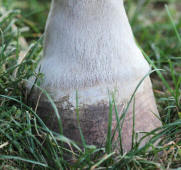
e.g. horse

Title8
text
Title9
text
hover over shaded words to reveal more
Artiodactyla
The order Artiodactyla includes mammals that stand on two toes or (exceptionally) four toes.
Cattle, sheep, deer and camels, for example, stand on two toes, pigs on four (but only when standing on soft ground).
Cf. Perissodactyla
Close-up of Artiodactyl Feet of Roe Deer






